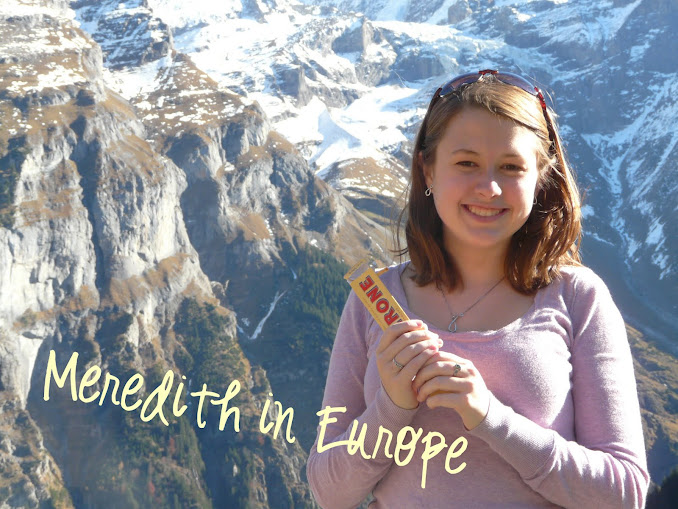
The festival reminded me of the state fair. I was sad because I was missing the fair this year. However, Eurochocolate could have been the state fair except for the fact that it was on streets surrounded by ancient palazzos and filled with chocolate. There was even a Ferris wheel. Perugia was rather crowded, but the festival was a fun experience. We walked through the streets fighting the crowd and tasting all types of chocolate.
I think there must have been some of every kind of chocolate ever made somewhere in Perugia. We saw all types of milk, dark, and white chocolate. There were chocolate bars probably bigger than all my textbooks put together. We saw chocolate bars with everything in them from hot peppers to honeydew melon. I bought a chocolate bar with rose petals in it. There were also many types of hot chocolate. Italian hot chocolate is very different from American. I like the Italian kind much better. It is thick and rich. It is more like heated pudding than a drink and I almost needed a spoon to eat it! I can’t drink much of it because it is so rich! We saw some familiar brands that are sold in the United States, such as Lindt and Toblerone. However, most of the chocolate can’t be bought in America. We saw all kinds of truffles and chocolate covered things. I even saw a box of beautifully hand painted chocolates that cost 50 euro (75 dollars)!

One interesting thing we did in Perugia was seeing where chocolate comes from. There was an exhibit on Mexico and the original forms of chocolate. We tasted some pure chocolate, which is very much like eating cocoa powder. I ate a real cacao bean, which is where cocoa powder comes from. It was disgusting! I don’t know how people ever figured to turn it in to the treat we eat today, but I’m glad they did. I bought some chocolate pasta to take back home with me and got a chocolate map of Perugia!

I would like to go back to Perugia sometime when there is no crowd, but I don’t think that will happen before the end of the semester. Perugia is situated on the top of a hill and was an Etruscan town. Perugia was conquered by the Romans, and eventually was owned by the Papal state. The Papal state remained in control of Perugia until the Italian state was formed in 1860. Today, Perugia is the capital of Umbria, one of the regions that border Tuscany.

I have been here for seven weeks now, and it is strange to think that the semester is half way over. I have adjusted to so many different things this semester. Only a few months ago, I had never taken public transportation, didn’t know a word of Italian, and had never been to Europe. Now, these things are typical for me. I am used to and beginning to cross the language barrier. I feel accomplished and knowledgeable. Here I am, successfully living in a foreign country, navigating culture, taking the train, and talking with people I have met.
The first time I went into a restaurant in Italy it was a pizzeria called Carpe Diem. I didn’t know anything about what to do in a restaurant. This is really a complicated thing to figure out. There were so many questions we didn’t know the answer to that night. Is it alright to seat yourself? Should you wait before you sit down? Will the waiter bring you a check? How do you get a box for leftovers? While I have now learned the answers some of to these questions, I still feel awkward sometimes. After I had been here for two weeks, I told Dr. Webb that I was tired of feeling out of place all the time. Now I have realized that even if I lived here for years, I would still look stupid sometimes. Now I know that the important thing is to try to learn and interact with others and to laugh at myself. I have learned so much about my culture from this experience and have been able to learn more about the real Italia. I have found many things about this culture that I really like, and some that drive me crazy! I know that there is still so much more for me to observe and experience.
I am really excited about the next several weeks, since this experience is still far from over. In my Italy in WWII class, we have been reading different novels and memoirs from the war. I am currently reading Iris Origo’s account of the war in her diary, titled War in Val d’Orcia. I am excited to be visiting the Val d’Orcia soon to see the places in this book. Iris Origo was an English-American woman who lived in Tuscany with her Italian husband. She housed many refugee children and helped partisans though the war. Her account details the experience of many Italian civilians during the war. One of the greatest things about studying abroad is getting to see history come alive by visiting the places where important events took place. Some things just have to be experienced.
Ci vediamo,
Meredith







